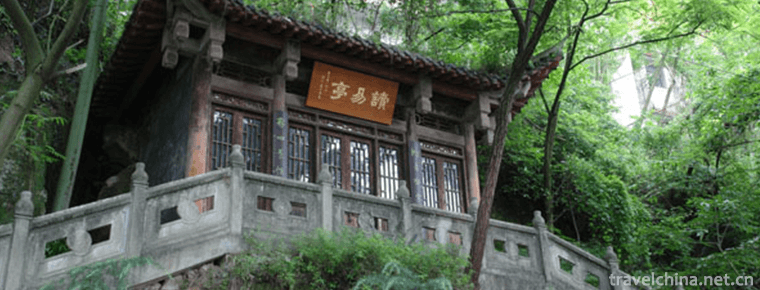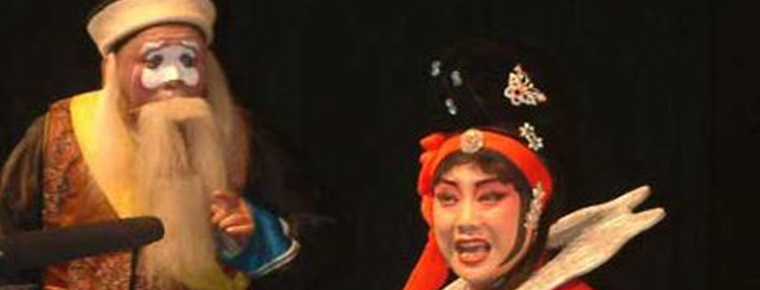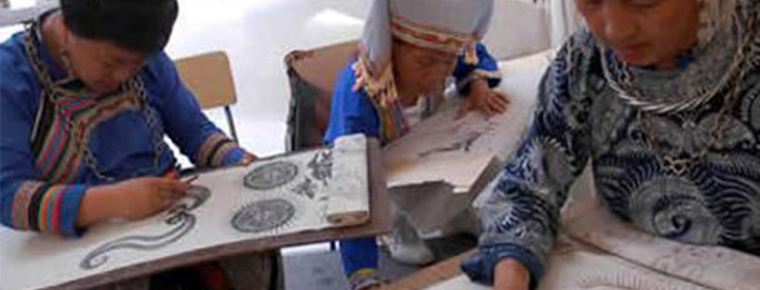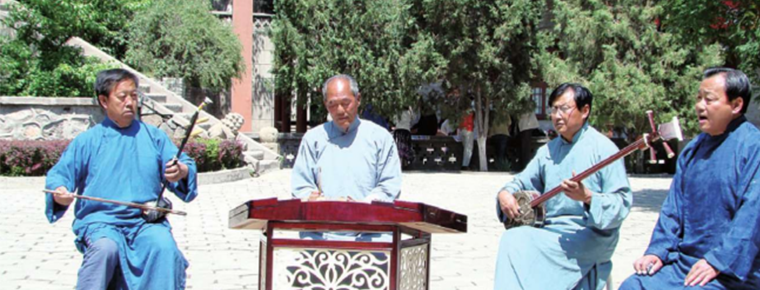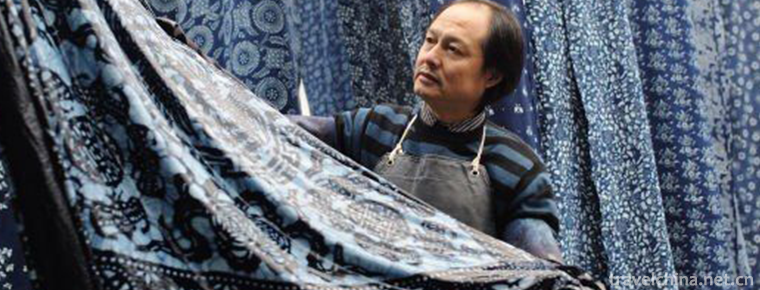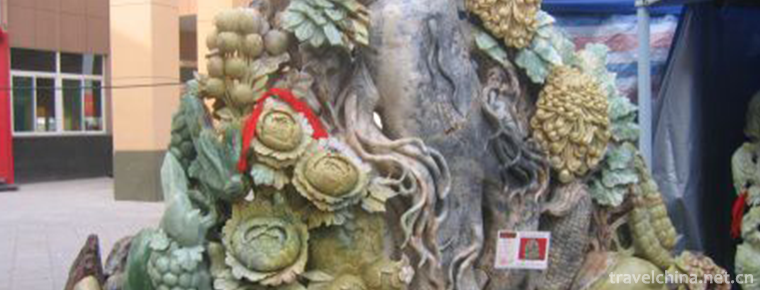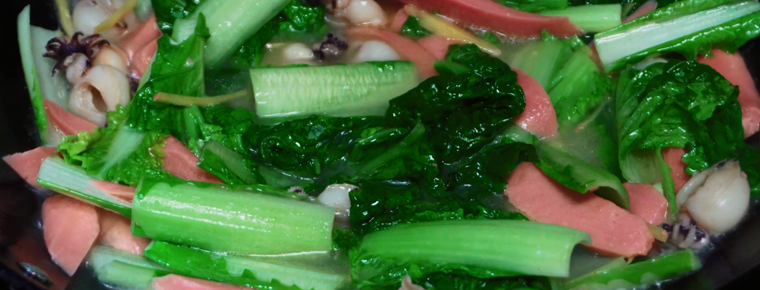Forging Skill of Zhang Xiaoquans Scissors
Forging Skill of Zhang Xiaoquans Scissors
Zhang Xiaoquan scissors forging technology, local traditional handicraft in Hangzhou, Zhejiang Province, one of the national intangible cultural heritage.
In 1663, Zhang Xiaoquan's scissors were first created in Hangzhou, and later became one of the famous "five Hangzhou" products. The development of "Zhang Xiaoquan" scissors has experienced a historical period from traditional handicraft to modern production.
On May 20, 2006, Zhang Xiaoquan's scissors forging technology was approved by the State Council of the People's Republic of China and listed in the first batch of national intangible cultural heritage list, item number_-38.
historical origin
Zhang Xiaoquan's scissors were famous in the late Ming and early Qing Dynasties. Zhang Xiaoquan's father, Zhang Sijia, was famous for his "three knives" in Wuhu when he was young. Later, beside Yixian City, Zhang Dalong opened a "scissors shop" in front of and behind his shop. Zhang Sijia is earnest in his work. His grinding scissors are tough and sharp, which are highly praised by people. Koizumi, under his father's careful instruction and constant practice, has also practiced a good hand-made scissors. When the Qing soldiers entered the Customs, their father and son fled to Hangzhou. In the big shaft and lane at the foot of Wushan, Zhang Dalong's scissors workshop was opened, and their casting skills were carefully studied. In the process of making scissors, the process of "inlaying steel" (also called inlaying steel) was used. Instead of using pig iron to forge scissors, Longquan and Yunhe steels of Zhejiang Province were chosen. The fine mud of Zhenjiang specialty was carefully grinded to make the scissors shining and prosperous. After Zhang Xiaoquanzi inherited his father's business, his business was thriving and ten times more prosperous because of his earnest production and excellent quality, and his location in Qinghefang, a commercial center in Hangzhou. In the second year of Emperor Kangxi of Qing Dynasty (1663 AD), in order to prevent others from selling scissors with Zhang Dalong's signboard, he changed the signboard to his own name "Zhang Xiaoquan".
It is said that when Emperor Qianlong of the Qing Dynasty went down the Yangtze River for the second time to Hangzhou, he disguised himself, mingled with pilgrims and walked up the mountain for sightseeing. Just as you were in full swing, Tiangong was not beautiful. Suddenly it began to rain, so you had to go down the hill to seek shelter from the rain. In a hurry, you walked into a workshop with the sign "ancestral Zhang Xiaoquan scissors". Qianlong was curious and took a pair of scissors with him. When he saw the cold flashing and sharp, he bought one and took it back to the palace. He liked the scissors very much as intrauterine scissors. Since then, Zhang Xiaoquan's scissors have made a great reputation, making scissors under the "Zhang Xiaoquan" brand. At most, they have reached 86, and the grand occasion of "Qingshan Yingbihu, Xiaoquan full of streets and alleys" has appeared.
When the first year of Xuantong (1909 A.D.) was passed on to Zhang Zuying, the cutting technology had been passed on for eight generations in Hangzhou. He sent the trademark "Haiyun Bath Day" to Zhixian Yamen and registered with the Ministry of Agriculture and Commerce. The trademark also added the word "Quanjin".
In 1915, Zhang Xiaoquan's short-hand scissors won an award at Panama's "World's Fair". Since then, scissors have been exported to South Asia, Europe and the United States. On average, the market sells more than 10,000 scissors of various sizes every month. In 1917, after Chang Zuying changed the surface processing of scissors to polishing and nickel plating, it became more popular with customers.
Just as Zhang Xiaoquan's momentum of development was booming, Japanese invaders invaded Hangzhou. Although Zhang Xiaoquan's scissors were far ahead in the scissors industry, they still suffered heavy losses and were on the verge of bankruptcy. Since the founding of New China, Zhang Xiaoquan's scissors have maintained their traditional characteristics and further improved their technology, output and quality. In 1957, "Hangzhou Zhang Xiaoquan Scissors Factory" was established.
In 2000, the overall restructuring of Zhang Xiaoquan's enterprises transformed into a limited liability company with diversified investors, which injected vitality into the development of Zhang Xiaoquan. Hangzhou Zhang Xiaoquan Group Co., Ltd. was founded after the successful transformation of the enterprise system, which has taken a decisive step towards the modern enterprise system.
Technological characteristics
Zhang Xiaoquan's scissors are famous for their uniform steel inlay, distinct steel, fine grinding, firm pins, exquisite patterns, novel chiseling, durable, sharp edges, smooth opening and closing, low price and good quality. The products of "Zhang Xiaoquan" brand have sharp blades and soft body, which have achieved the effect of "combining steel with flexibility".
Technological process
The forging technology of Zhang Xiaoquan's scissors consists of 72 working procedures, such as steel testing, iron testing, steel inlaying, tapping, file inner opening, file outer opening, quenching, rough grinding, fine grinding, inspection and flower chipping. There are two unique production techniques in Zhang Xiaoquan's traditional shearing process, one is steel-inlaid forging, the other is steel-inlaid forging and scissors, instead of pig iron forging and scissors, good steel from Longquan and Yunhe of Zhejiang is selected to be inlaid on the cooked iron, and elaborately grinded with extremely fine mud of Zhenjiang's special products, after thousands of hammers and hundreds of tempers. Make the edge of scissors and grind it with Zhenjiang clay brick. Second, the hand-carving skill of the scissors'surface. The scissors' surface is carved with the patterns of West Lake landscape, birds and animals, which are lifelike, perfect and delicate.
Inheritance and Protection
Inheritance value
Zhang Xiaoquan, the founder of Zhang Xiaoquan's scissors, once set up the family training of "fine steel works", which was practiced by his successors and became the core concept of Zhang Xiaoquan's corporate culture. Zhang Xiaoquan scissors factory "quality first, integrity-based" business purpose and "do everything with heart" spirit is derived from this.
Zhang Xiaoquan scissors is the only well-known trademark in the scissors industry in China, and a business card of the scissors industry in China. As the first batch of national intangible cultural heritage, Zhang Xiaoquan's scissors forging technology occupies an important position in the development history of scissors in China. Its development history fully shows the process of transformation from traditional Chinese scissors production to modern scissors production. It basically reflects the development history of scissors in China since Ming and Qing Dynasties. The epitome of history has played an important role in the development of scissors in China.
Current situation of inheritance
In the 1950s, the production of a pair of scissors was completed through 72 processes under the simple conditions of "a bellows, a hammer, a grindstone, a basin, a file and a stool". With the mechanization and automation of more than 90% of the production processes of Zhang Xiaoquan scissors, only 9 processes were needed at least. With the large-scale application of stamping and injection moulding technology, the traditional process is gradually abandoned. Even the traditional processes still being used are only backward and no progress has been made. Many cutting and cutting workers are too old to operate in person. As a result, this ancient handicraft has been inherited and broken, and now the skilled shears who can complete all the processes from beginning to end no longer exist. The forging process of Zhang Xiaoquan scissors is in urgent need of rescue and recovery.
Heritage figures
Shi Jinshui, male, born in March 1933. In June 2007, Shi Jinshui was selected as the representative successor of the first batch of national intangible cultural heritage projects: Zhang Xiaoquan scissors forging technology.
Xu Zuxing, male, was born in November 1931. In June 2007, Xu Zuxing was selected as the representative successor of the first batch of national intangible cultural heritage projects: Zhang Xiaoquan scissors forging technology.
Zhang Zhongyao, male, 8 May 2018, Zhang Zhongyao was selected as the representative successor of the fifth batch of national intangible cultural heritage projects, inheritance project: Zhang Xiaoquan scissors forging technology.
protective measures
In 2002, Zhang Xiaoquan scissors passed the ISO 9001 quality management system certification, and in the same year, they were also protected by the registration of origin.
social influence
Honorary recognition
In 1910, Zhang Xiaoquan's scissors won the silver prize of Nanyang Exercise Association.
In 1915, Zhang Xiaoquan won the second prize of Panama World Expo.
In 1926, Zhang Xiaoquan's scissors won the silver medal of the World Expo in Philadelphia, USA.
In 1929, Zhang Xiaoquan scissors won the first prize at the West Lake Expo.
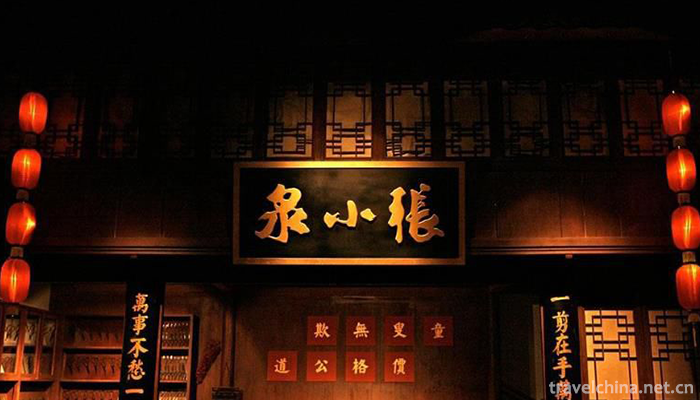
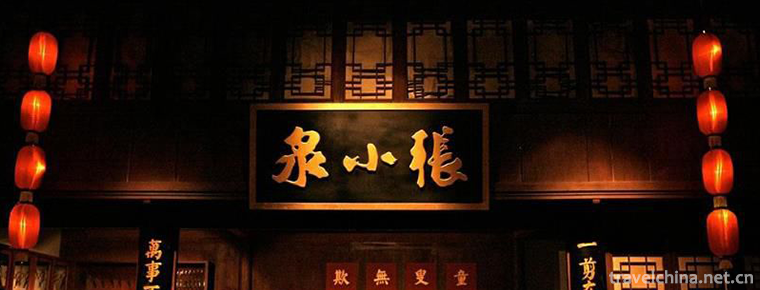
Forging Skill of Zhang Xiaoquans Scissors
-
Boundary Island Scenic Area
Border Island Eco-cultural Resort, a national 5A class tourist attraction, covers an area of 0.45 square kilometers. Located at the exit of Niuling 15 of Haikou Sanya East Highway, Hainan Province
Views: 160 Time 2018-12-12 -
Nanchong Xishan Scenic Area
Nanchong Xishan Scenic Spot, located in the west of Shunqing City, is a provincial scenic spot and a national 4A-level tourist attraction. It is the destination of "Three Kingdoms Cultural Explor
Views: 227 Time 2019-02-25 -
Changzhou comb
Comb, also known as Chlamys, is one of the eight hairdresses in ancient China. It is a local traditional handicraft with a long history in Changzhou City, Jiangsu Province.
Views: 296 Time 2019-04-16 -
De ang Watering Festival
The De'ang Water-Sprinkling Festival (also known as the Water-Sprinkling Festival) is held seven days after the Qingming Festival every year. It is a three-day commemorative event that combines the th
Views: 192 Time 2019-04-26 -
Ceramic Firing Techniques of Dengfeng Kiln
Dengfeng kiln ceramics firing technology is a National Intangible Cultural Heritage Representative project. Historical records began in the Tang Dynasty and flourished in the Song Dynasty.
Views: 172 Time 2019-04-26 -
Two strands
Erguxian is an ancient traditional opera, which was formed in Song Dynasty and has a history of more than 500 years. The two-strand string is evolved from folk minor,
Views: 299 Time 2019-04-28 -
Batik art
Miao batik technology, the traditional handicraft of Danzhai County, Guizhou Province, is one of the national intangible cultural heritage.
Views: 129 Time 2019-05-10 -
Lanzhou drum
Lanzhou Drum, also known as Lanzhou Drum Ci and Lanzhou Quzi, is a popular folk form in Lanzhou area and one of the ancient Chinese Quyi. Lanzhou drum is a form of music art mainly composed of sitting
Views: 206 Time 2019-05-10 -
Printing and Dyeing Techniques of Blue Printed Cloth
The printing and dyeing technology of blue printed cloth is a kind of anti-dyeing and printing method of indigo printed cloth. The dye is extracted from Polygonum multiflorum.
Views: 261 Time 2019-05-11 -
Xiuyan Jade Carving
Xiuyan Jade Carving, one of the national intangible cultural heritage, is a local traditional art in Xiuyan Manchu Autonomous County, Liaoning Province.
Views: 152 Time 2019-07-08 -
Sausages with cuttlefish
Cuttlefish, also known as cuttlefish, squid. Cuttlefish is delicious, nutritious and of high medicinal value. It is rich in protein, fat, inorganic salt, carbohydrate and many other substances. In add
Views: 298 Time 2020-04-10 -
Meishan secondary industry
By the end of 2019, there were 596 Industrial Enterprises above Designated Size, and the added value of industries above designated size increased by 9.8%. In the whole year, 82 kinds of products from industries above Designated Size participated in the statistics,
Views: 330 Time 2020-12-18

